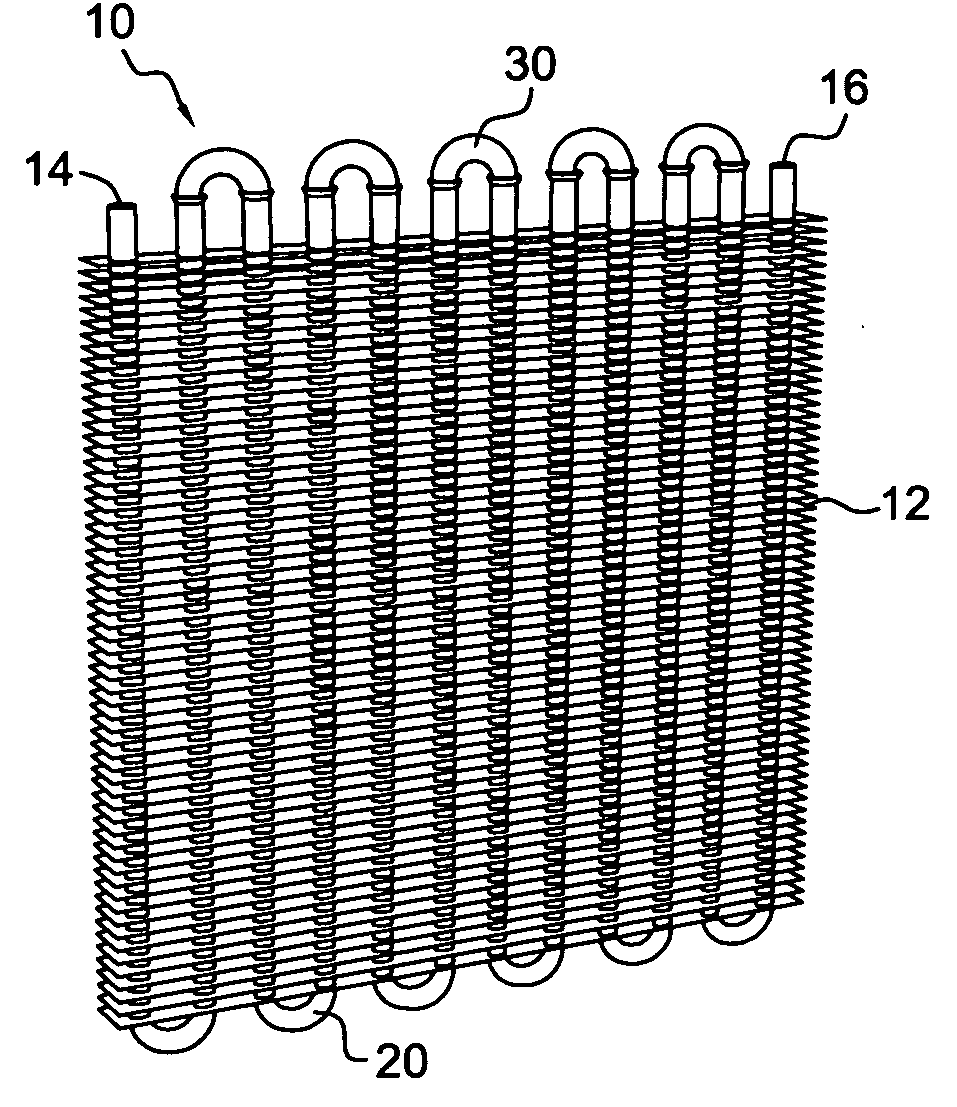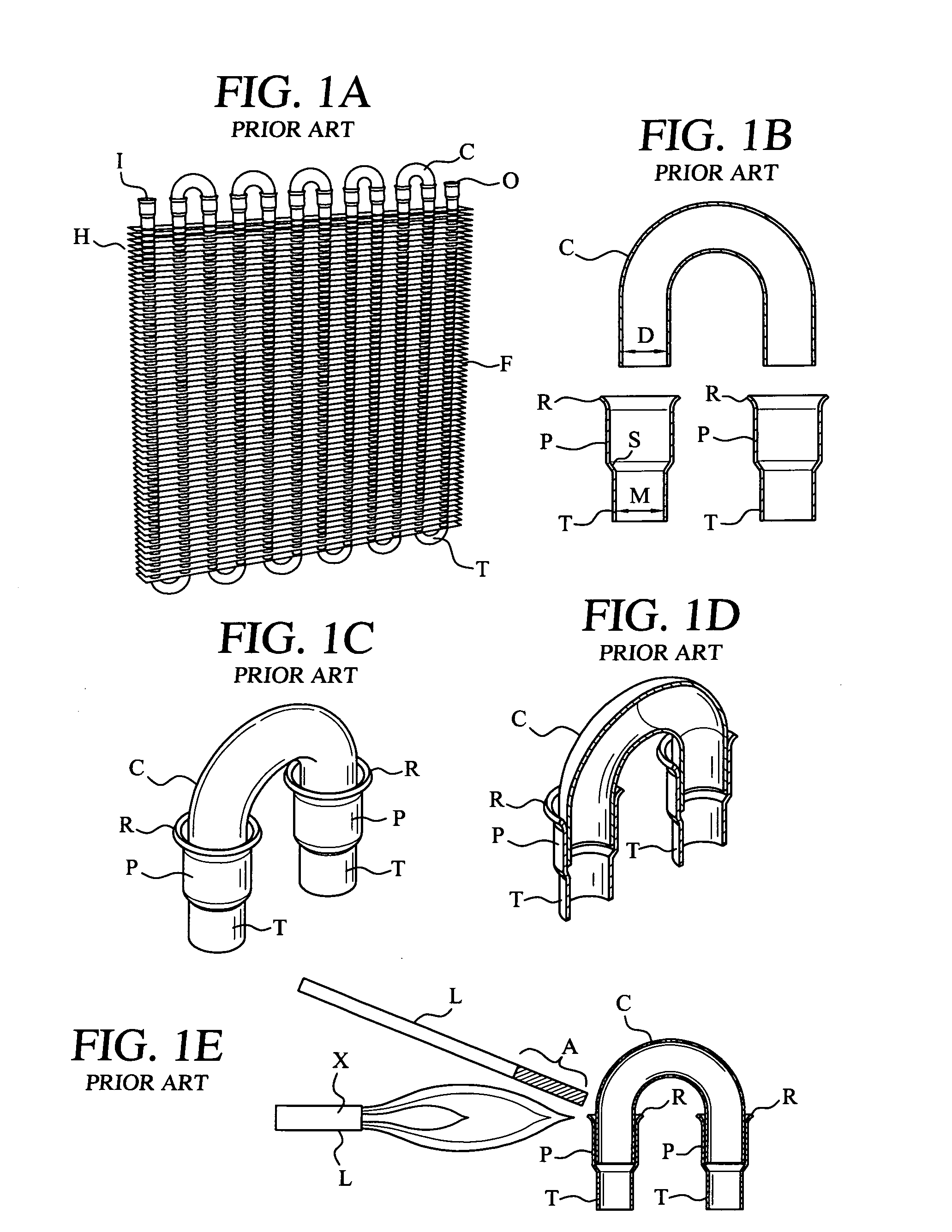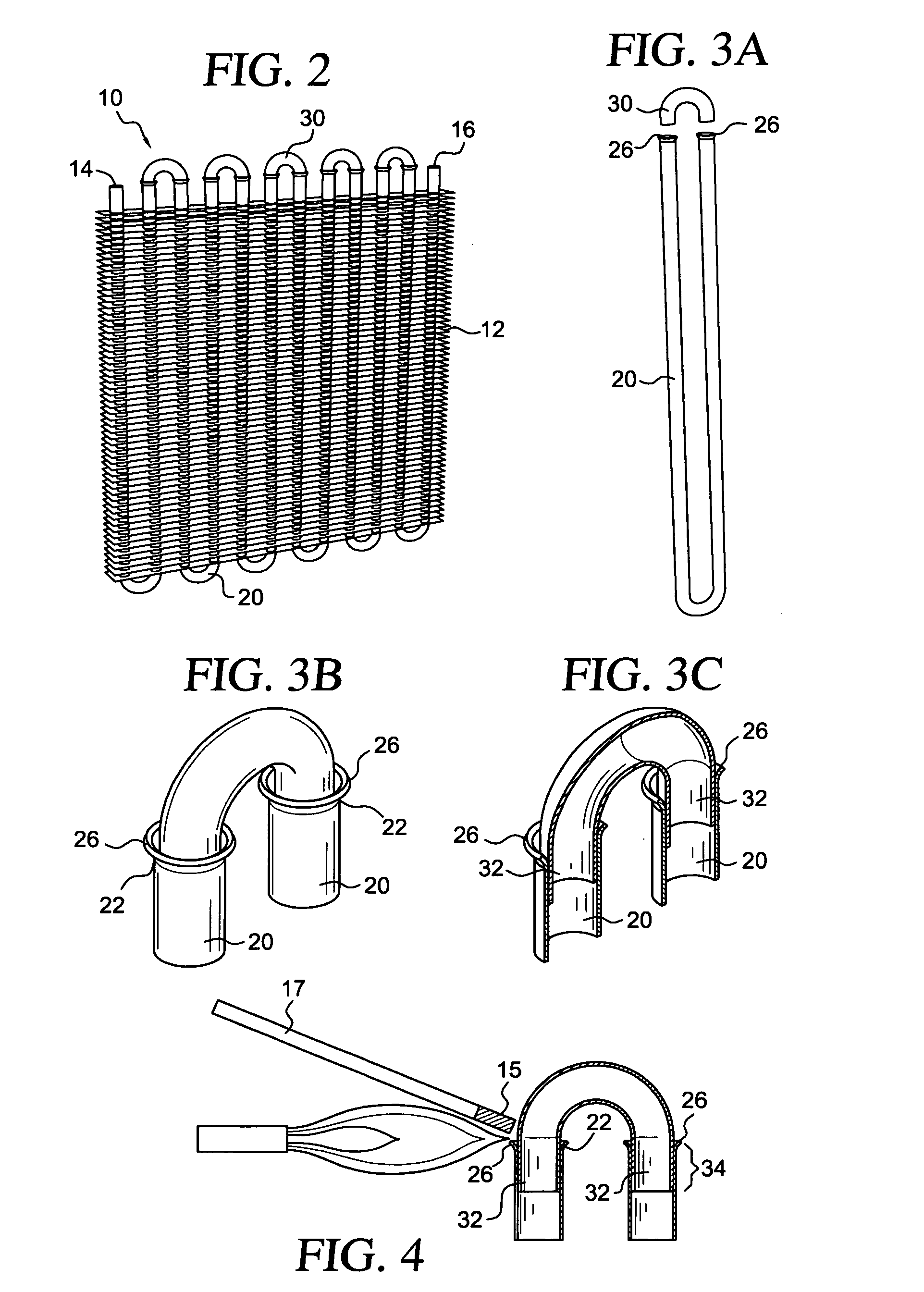Heat exchanger systems & fabrication methods
- Summary
- Abstract
- Description
- Claims
- Application Information
AI Technical Summary
Benefits of technology
Problems solved by technology
Method used
Image
Examples
Embodiment Construction
[0040]FIG. 1A shows a prior art heat exchanger H with tubes T through which heat exchange fluid flows and fins F in contact with the tubes T. Connectors C (“U-bend connectors”) connect adjacent ends of adjacent tubes T so that fluid is flowable from an inlet I to an outlet O through all the tubes T and the connectors C.
[0041]As shown in the FIGS. 1A-1E, each end of a tube T projecting from the upper most fin F has a flared portion R and an expanded portion P. In one aspect of prior art heat exchangers and, as shown in FIG. 1B, an inner diameter D of a connector C is substantially the same as the inner diameter M of the tubes T. To accommodate the outer diameter of the connectors C, the expanded portion P must be sufficiently wide to receive an end of a connector C. Expanding a tube end can result in stress that damages the tube end.
[0042]The flared portion R facilitates the initial entry of an end of a connector C into the expanded portion P. The ends of the connector C go down into...
PUM
| Property | Measurement | Unit |
|---|---|---|
| Fraction | aaaaa | aaaaa |
| Digital information | aaaaa | aaaaa |
| Thickness | aaaaa | aaaaa |
Abstract
Description
Claims
Application Information
 Login to View More
Login to View More - R&D
- Intellectual Property
- Life Sciences
- Materials
- Tech Scout
- Unparalleled Data Quality
- Higher Quality Content
- 60% Fewer Hallucinations
Browse by: Latest US Patents, China's latest patents, Technical Efficacy Thesaurus, Application Domain, Technology Topic, Popular Technical Reports.
© 2025 PatSnap. All rights reserved.Legal|Privacy policy|Modern Slavery Act Transparency Statement|Sitemap|About US| Contact US: help@patsnap.com



